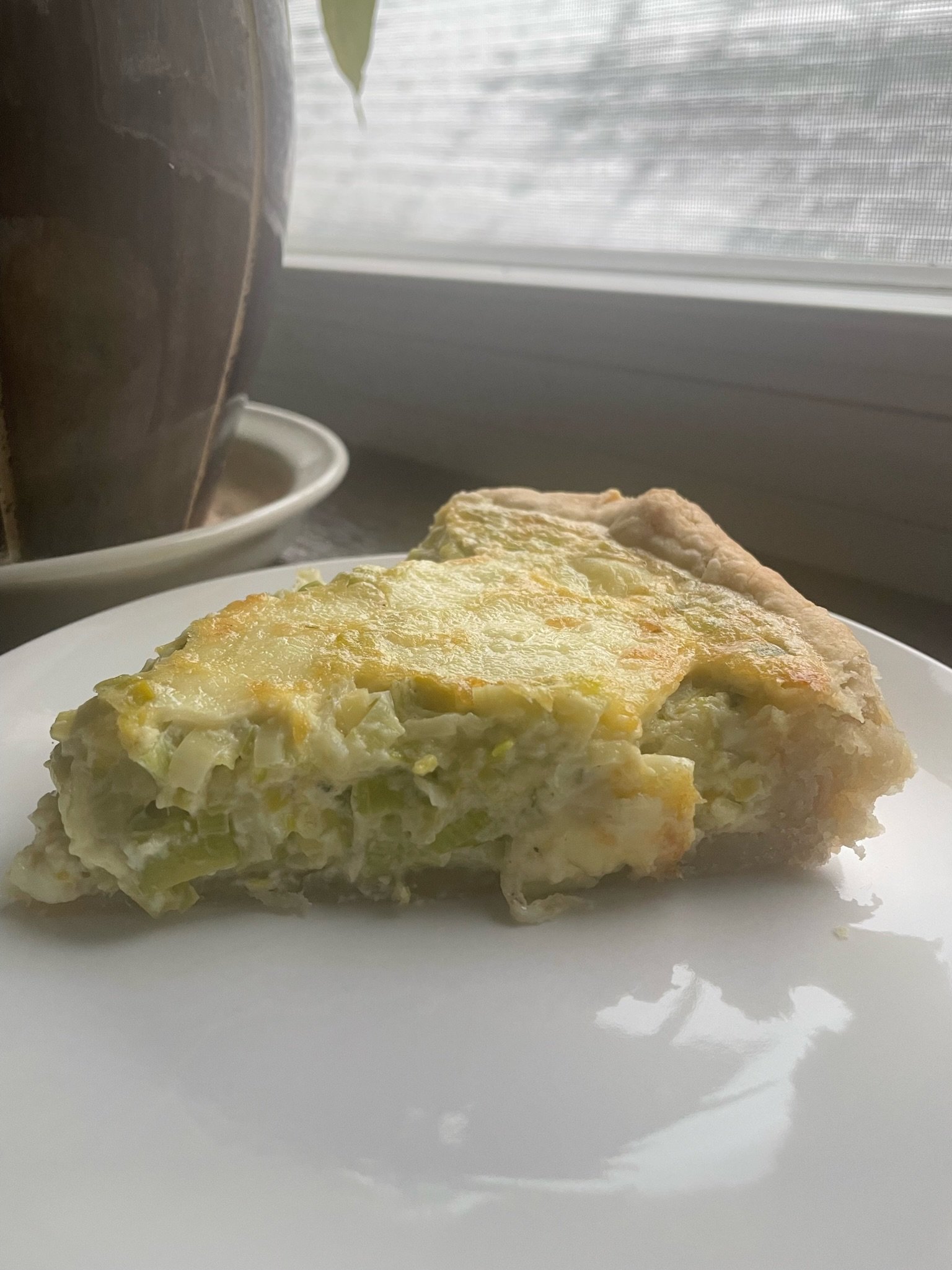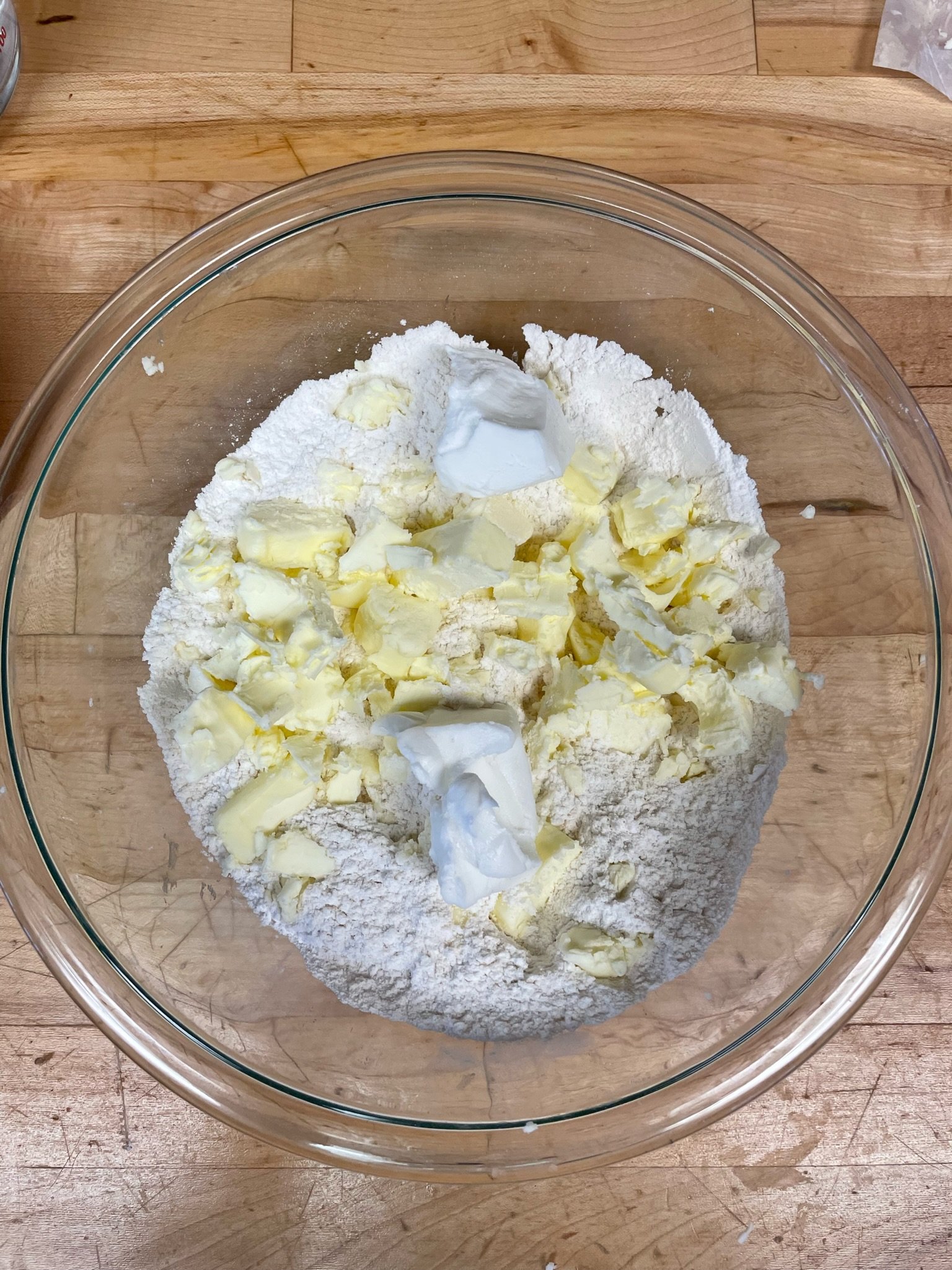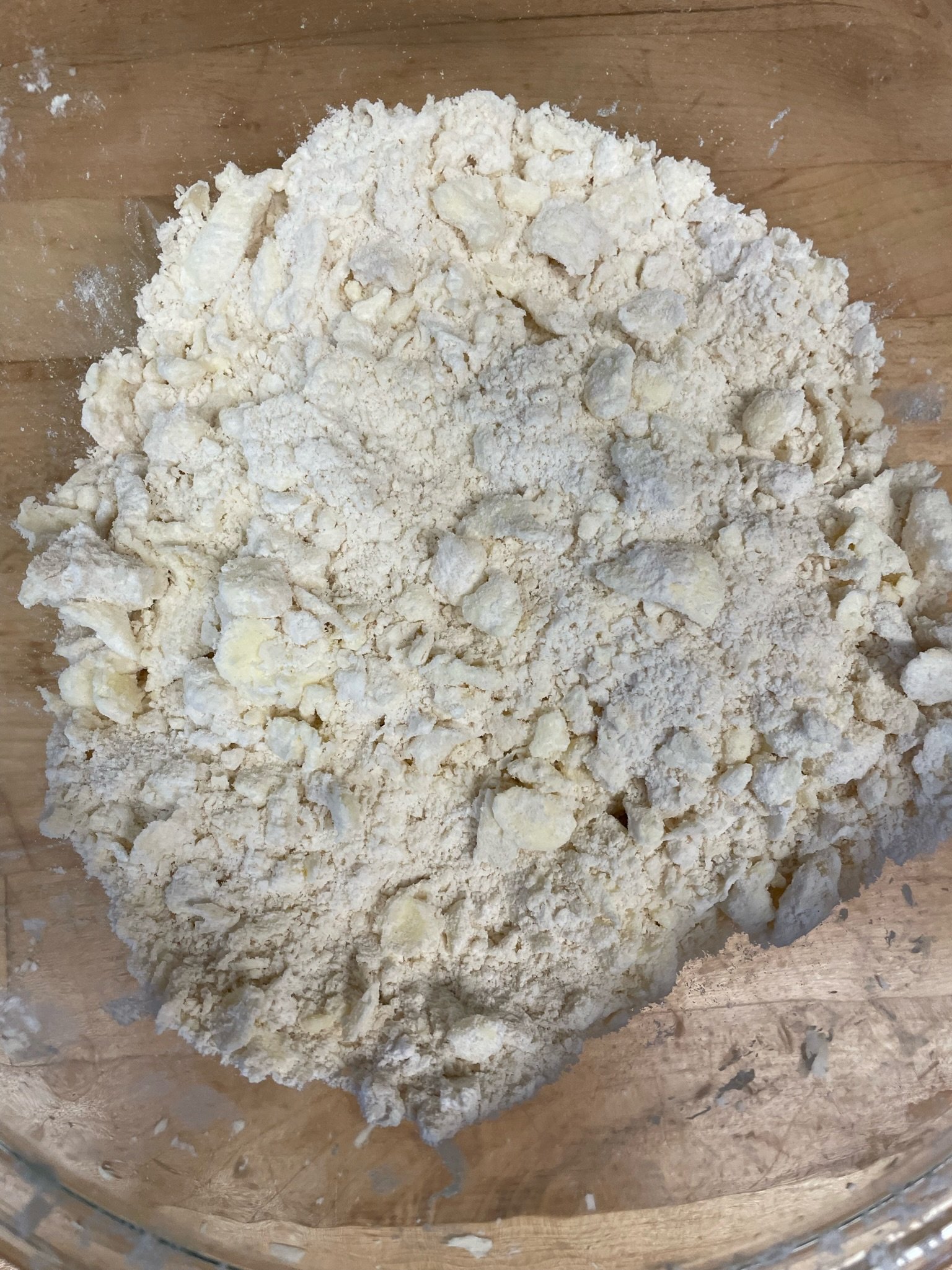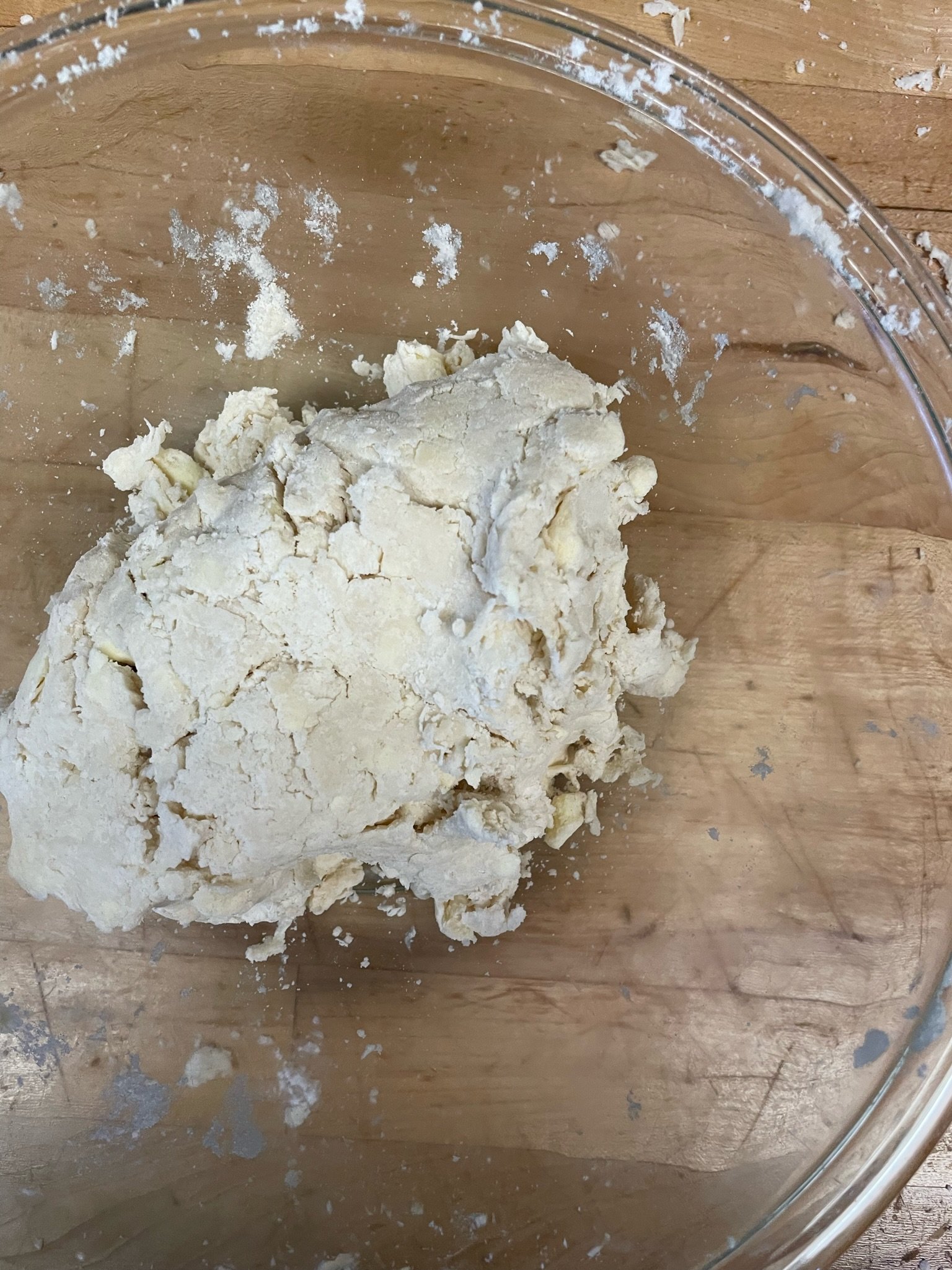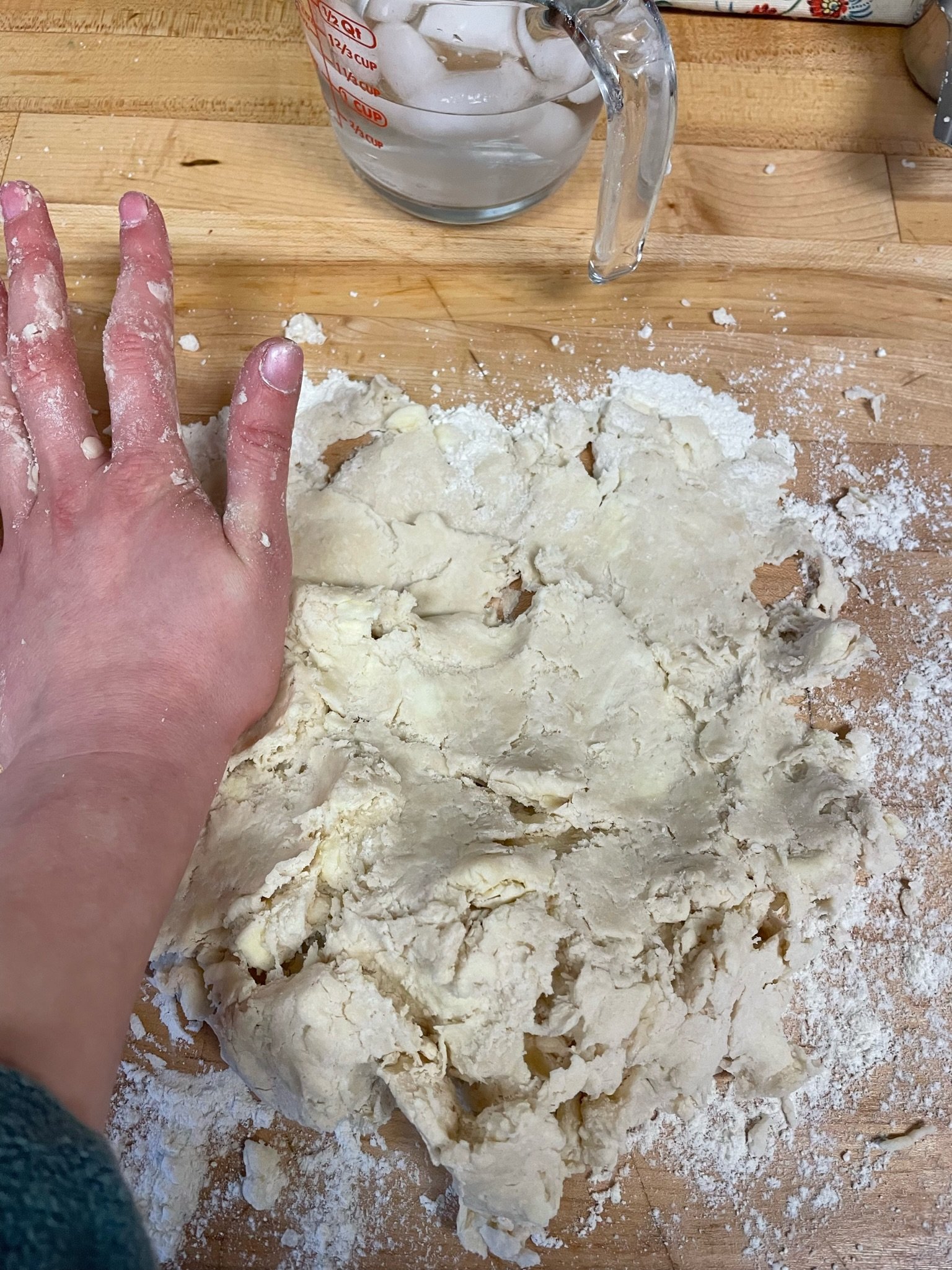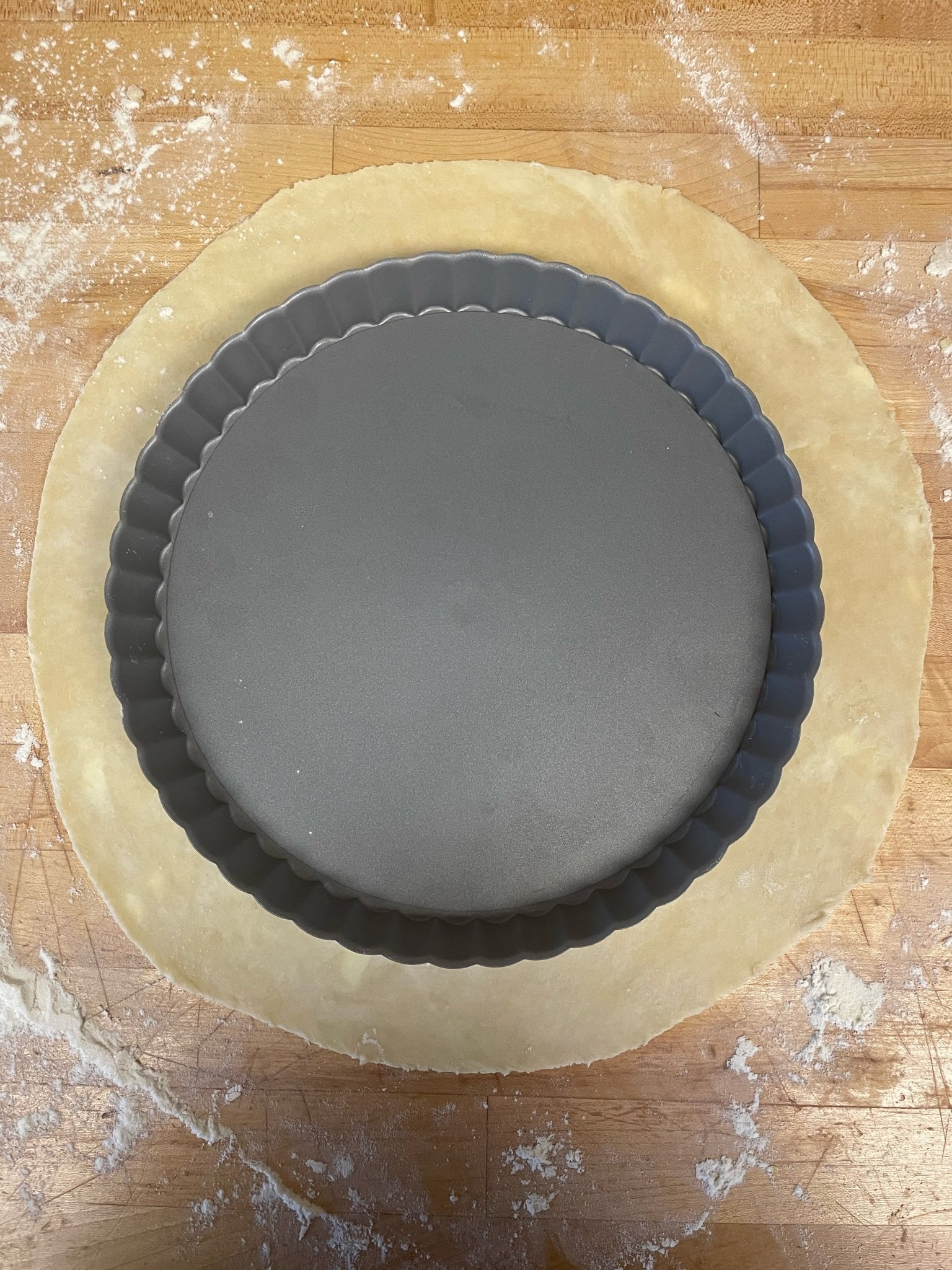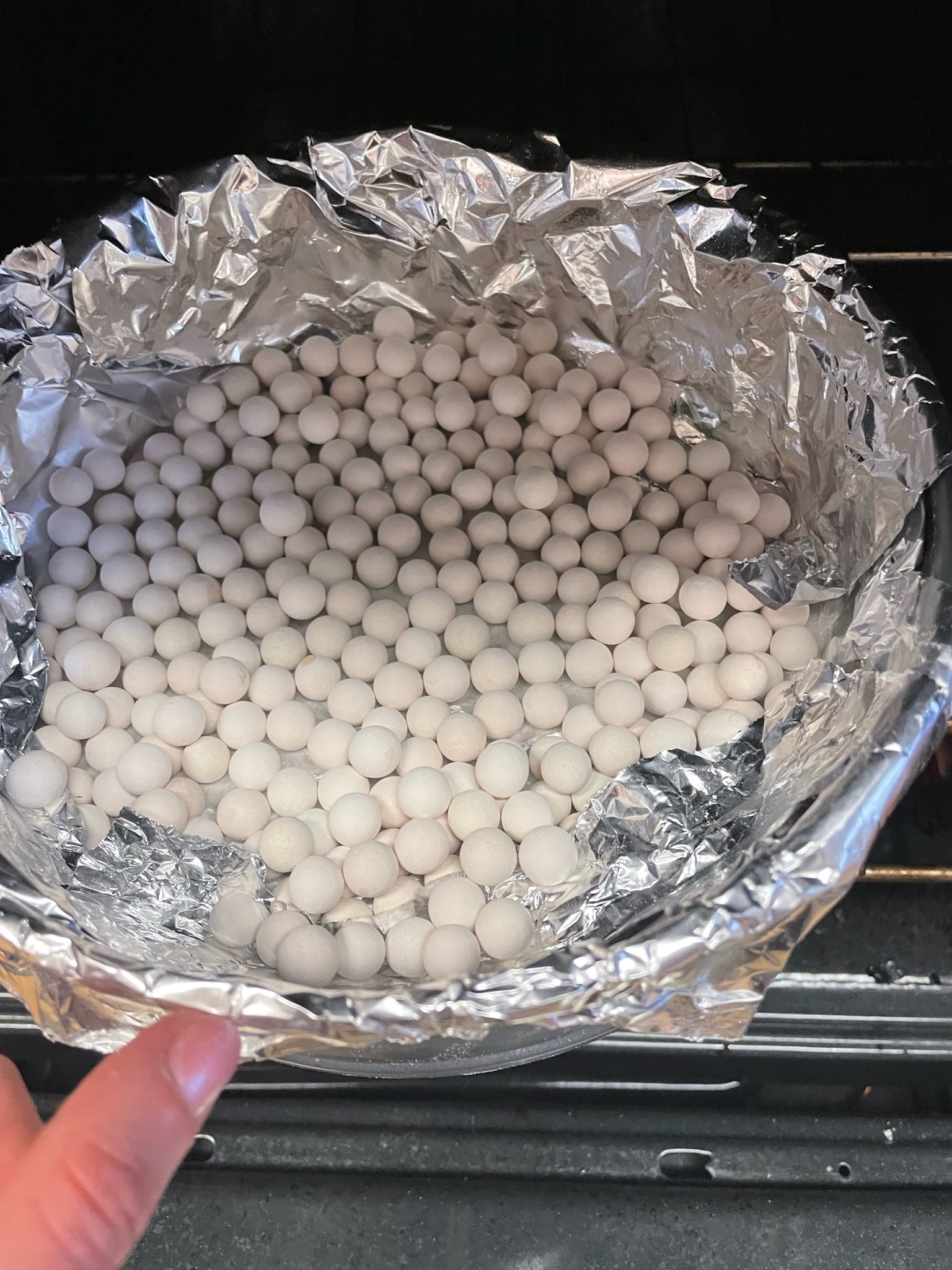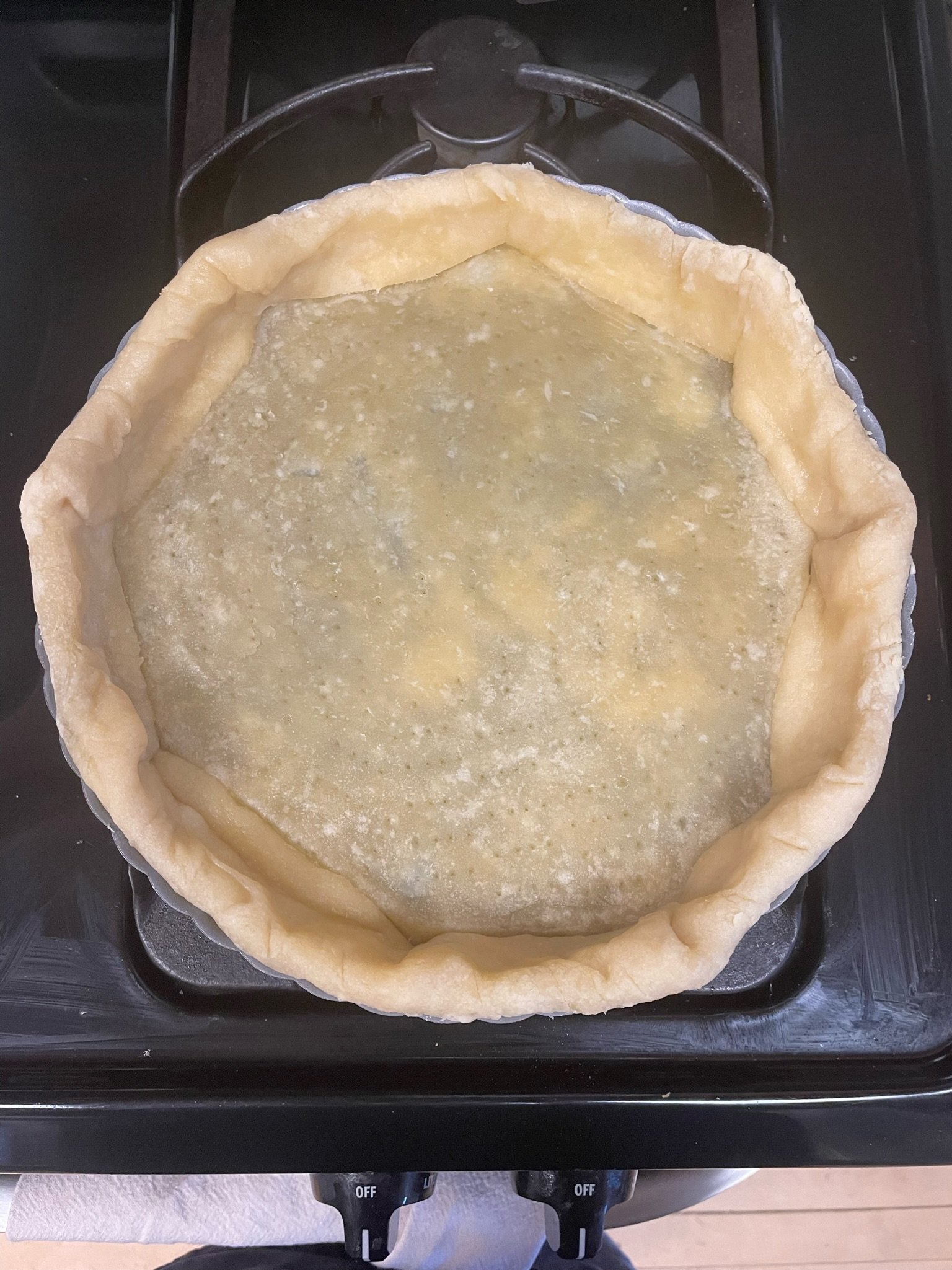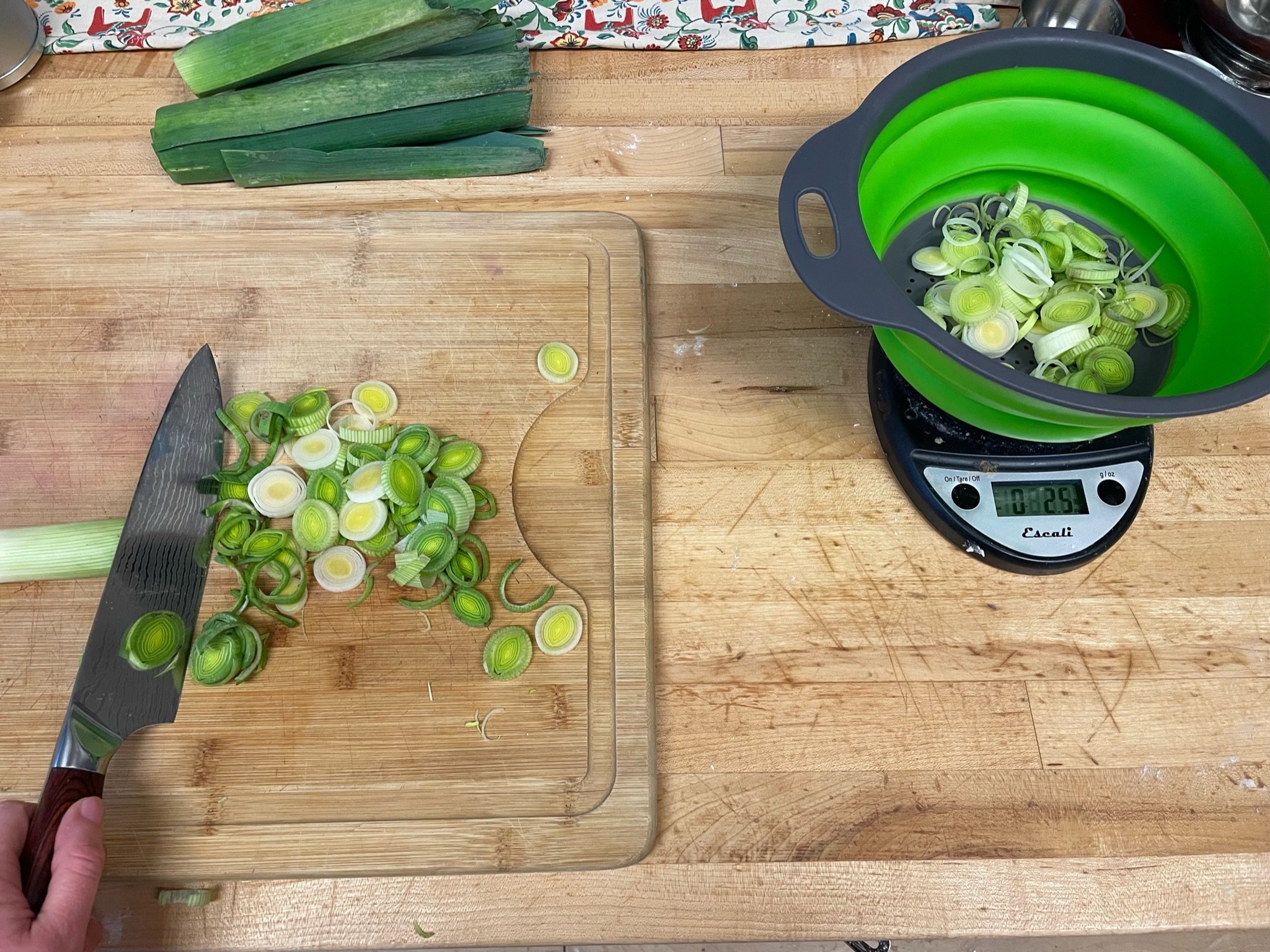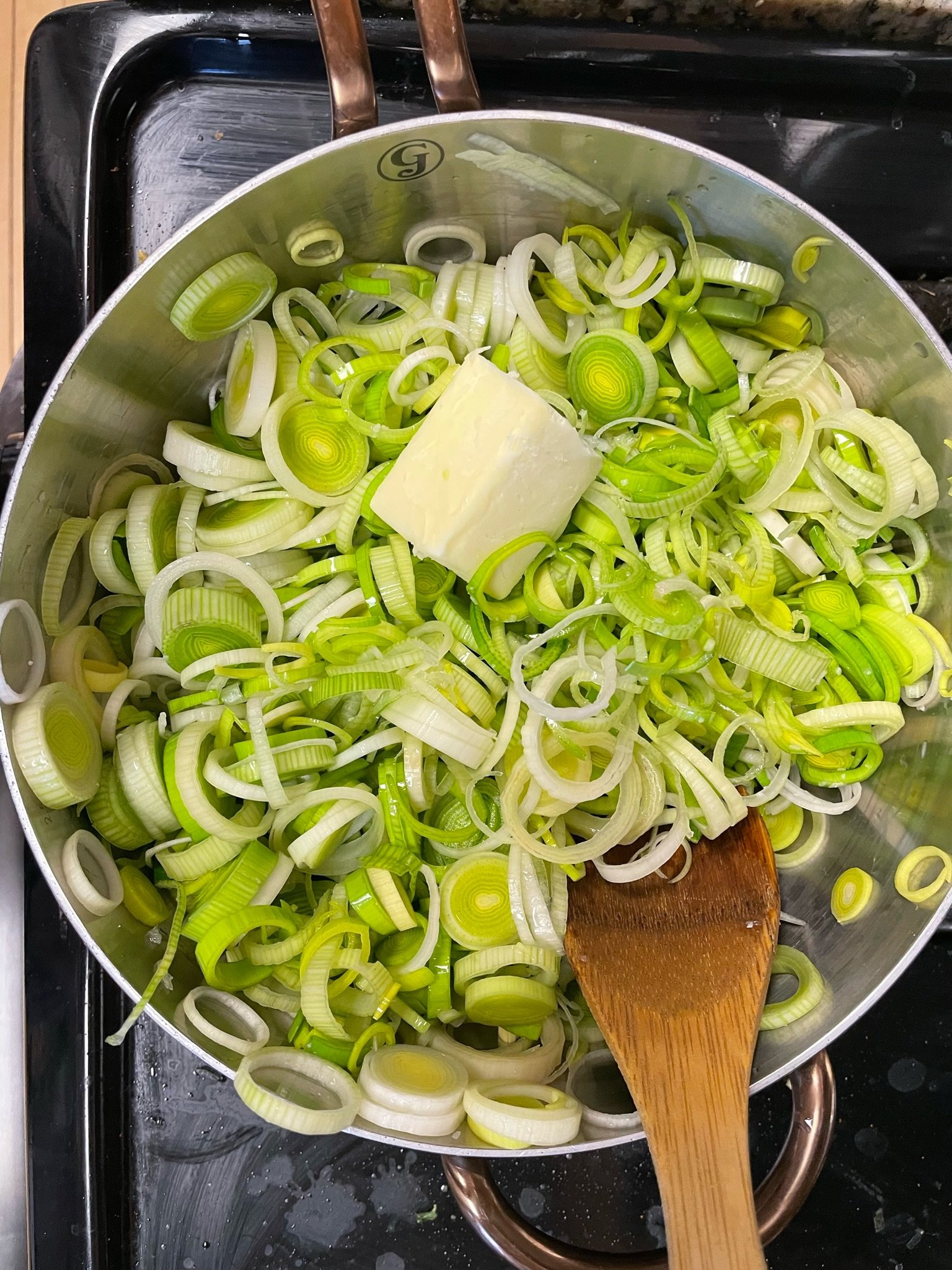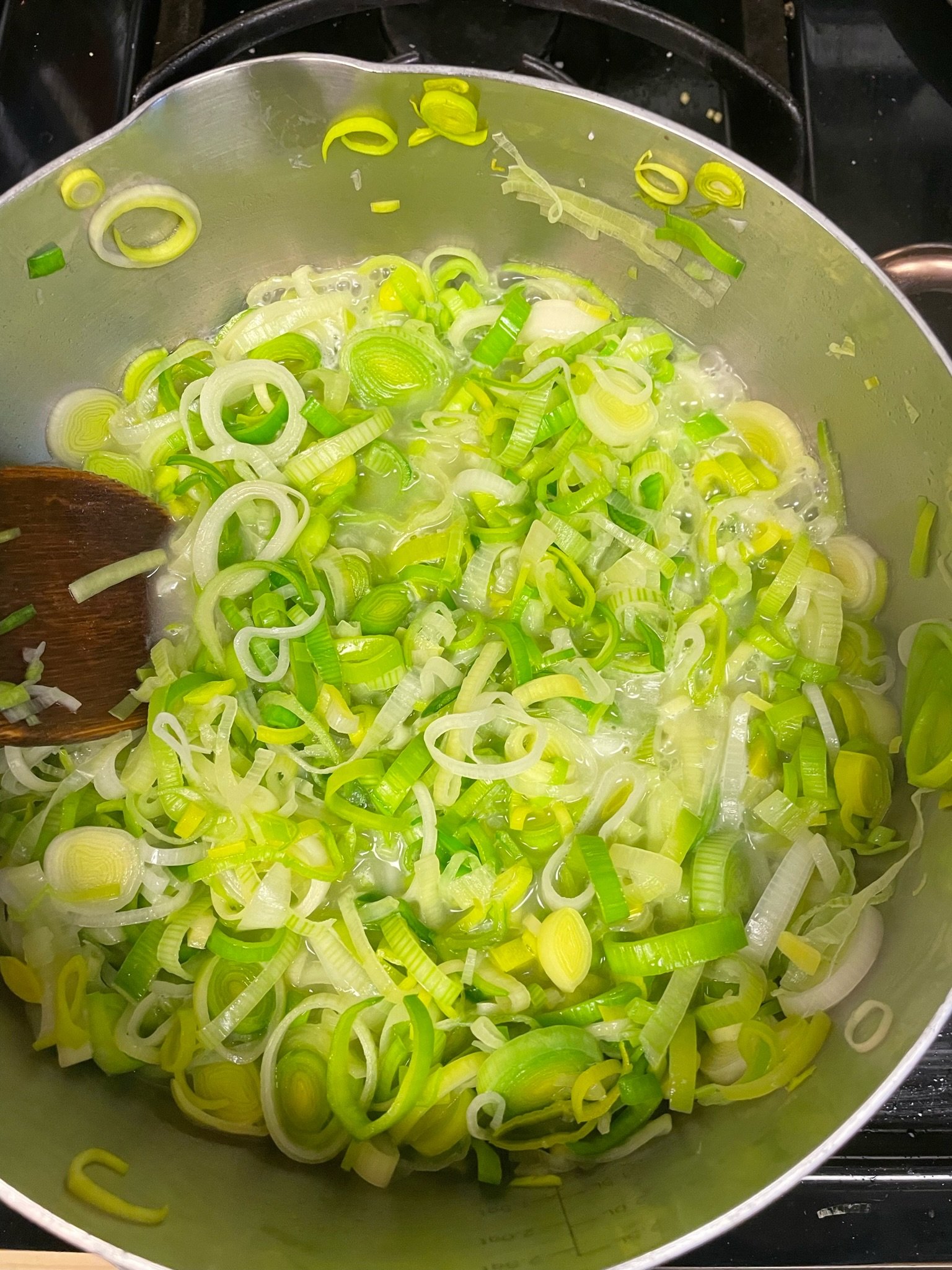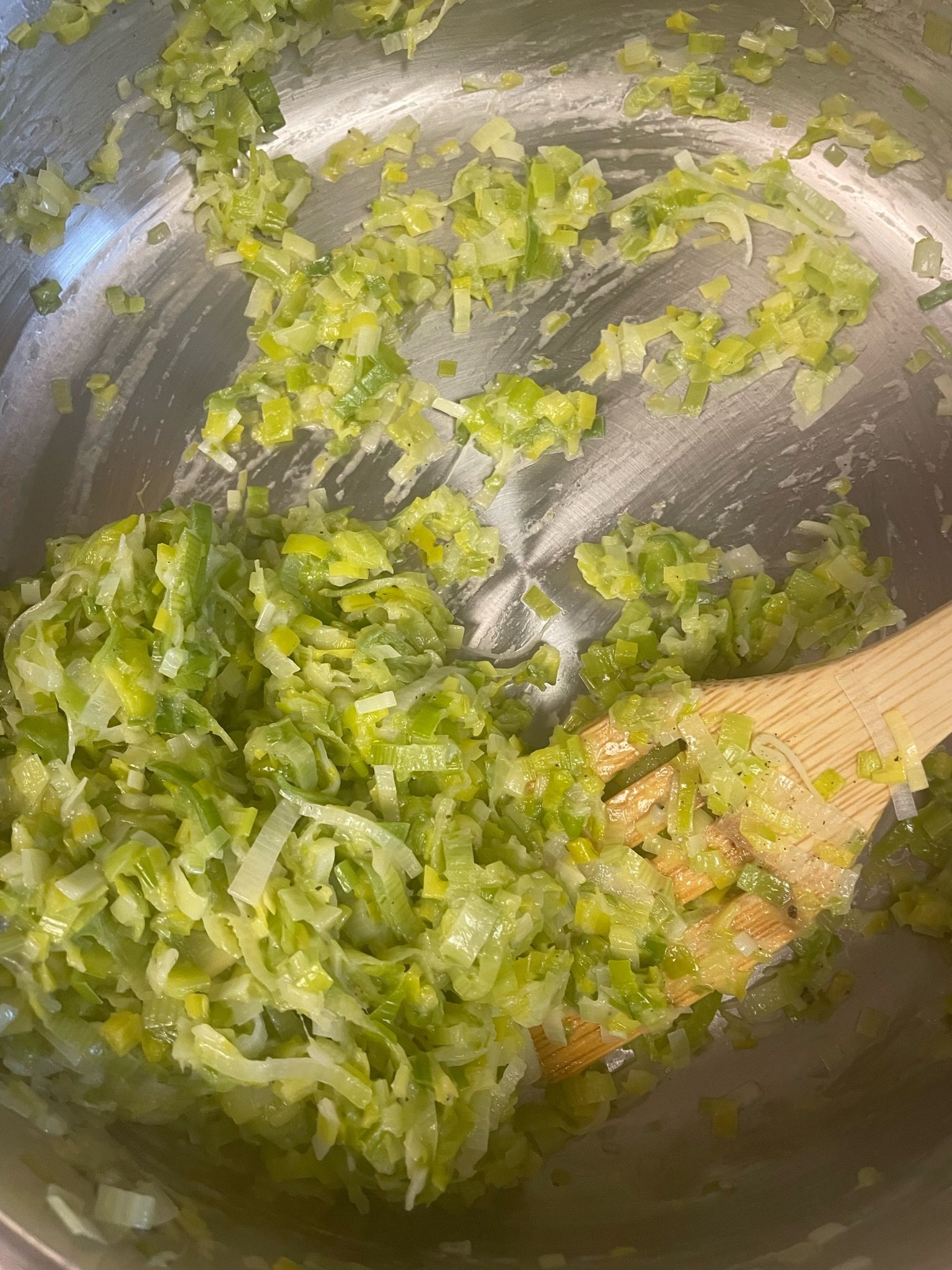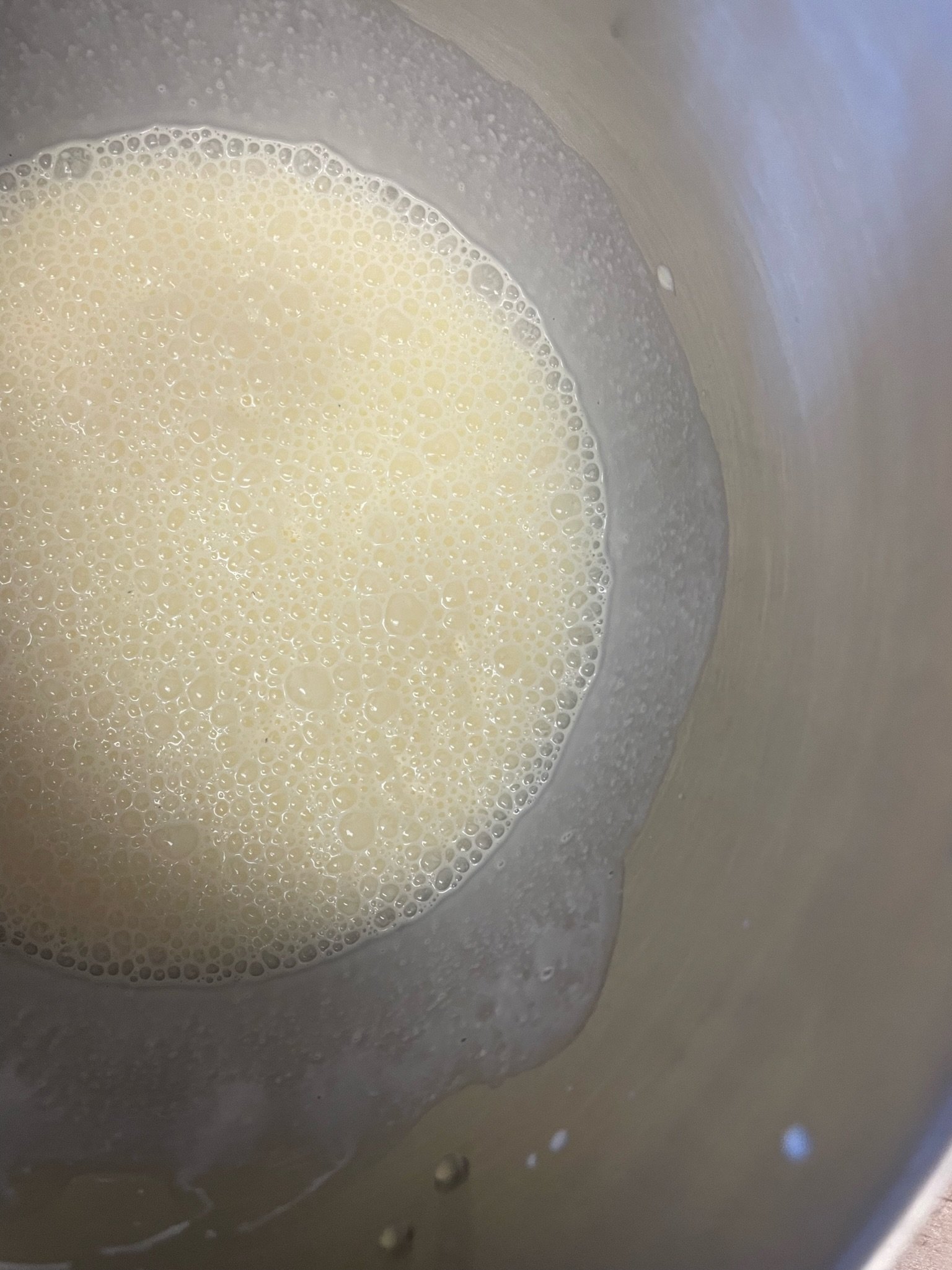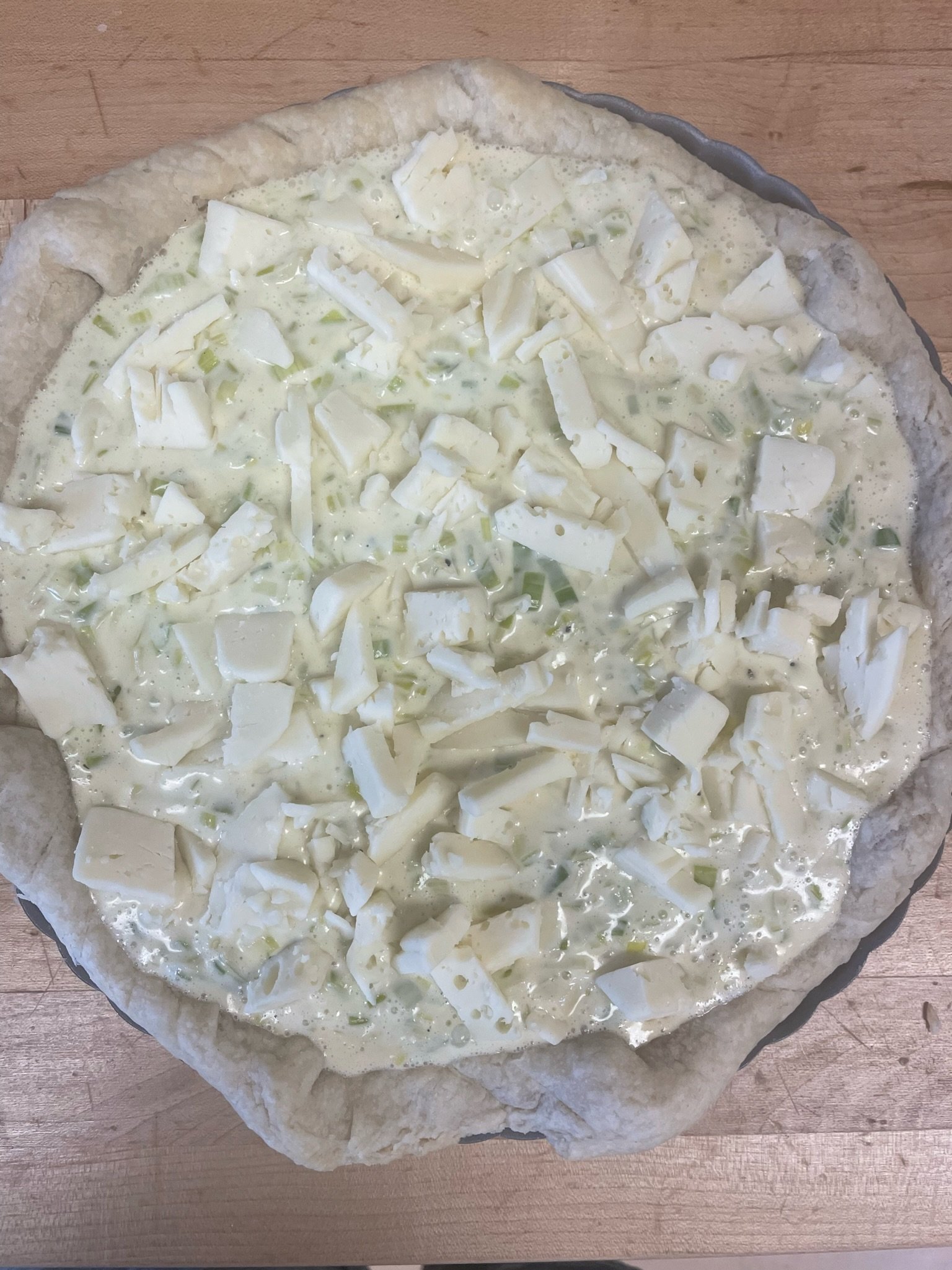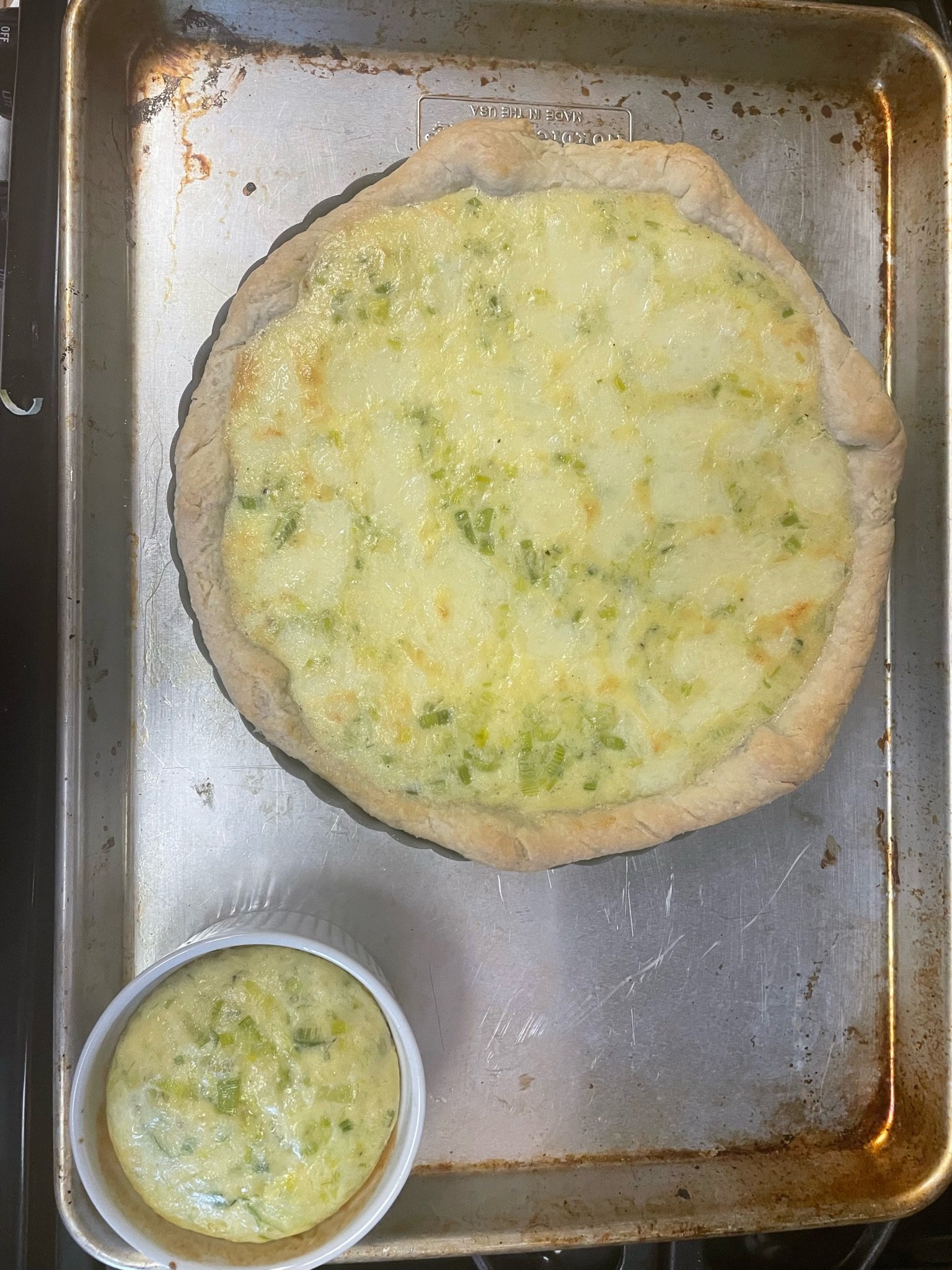by Cheesemonger Carolyn
adapted from “Mastering the Art of French Cooking” by Julia Child
Julia Child (Julia Carolyn Child, actually, named after her mother) is one of my kitchen heroes for many reasons, but one is the sense of place that is so evident in her food writing. Just as Julia was inspired to cook by the bounty she found in the outdoor markets in France, I am drawn to my kitchen again and again in search of new ways to showcase my goodies from the farmers’ market. I love imagining how Julia would have cooked if she had the abundance of locally produced Wisconsin cheeses that I have at my disposal—so I gave it a try! Gentle, sweet leeks are a perfect match for our fan-favorite creamy Amish Swiss in this Midwestern take on a French classic. Serve with a simple salad, warm bread, and chilled white wine or sparkling water, and pretend you’re in Paris!
INGREDIENTS
For homemade pâte brisée:
2 cups all-purpose flour (283g)
1 tsp kosher salt
1/4 tsp sugar
12 tbsp cold unsalted butter
4 tbsp cold vegetable shortening
1/2 cup cold water
For quiche:
1 lb thinly sliced leeks, white and light green parts only (from 3-5 leeks, see note)
1 cup water
1 tsp kosher salt
3 tbsp unsalted butter
3 eggs
1 1/2 cups heavy whipping cream
Freshly ground black pepper
Pinch freshly grated nutmeg, optional
4oz Amish Swiss, chopped (see note)
INSTRUCTIONS:
To make pâte brisée:
1. Stir together flour, salt, and sugar in a large mixing bowl. Dice butter and shortening and work into the flour mixture (a pastry blender is nice, clean hands work too!) until the mixture resembles a coarse meal, with some larger flakes and lumps of fat resembling peas or even small almonds.
2. Add water and mix with a cupped hand until a rough ball of dough begins to form, adding an additional tsp or two of water if needed. Dough should just hold together and be soft, but not sticky.
3. Transfer dough to a clean lightly floured counter or cutting board. With the heel of your hand, smoosh about two spoonfuls’ worth of dough down and forward about 6 inches, repeating until you’ve worked through the whole ball. This is an extra step in French pastry called fraisage— it helps evenly blend the fat and flour to ensure a flaky yet tender crust once baked.
4. Gather and knead the dough back into a smooth ball and press it into a flat chubby disc, about 6 inches in diameter. Sprinkle it with a bit of flour, wrap securely in plastic, and refrigerate until ready to par-bake, or at least two hours.
To roll out and par-bake pastry shell:
1. Preheat oven to 400 degrees and set a rack in the center.
2. Unwrap chilled dough and place on a clean lightly floured counter or cutting board. If it’s been in the refrigerator overnight or longer you may need to let it sit at room temperature for a bit first.
3. Sprinkle dough and rolling pin with flour. Place pin across the center of the disc and roll back and forth gently, just to get it going. Then, switch to firmer strokes and roll only out towards the edges of the dough. Lift and turn the dough, working all the way around and sprinkling with additional flour if needed, until you’ve got a circle a little less than 1/4 inch thick and 2-3 inches wider than your pan (trim excess with a butter knife if needed).
4. Fold crust into quarters, then unfold it into your pan. Press lightly into the bottom of the pan, and fold excess dough over and into the edges to make the sides of the pastry shell a little thicker and sturdier. Use a knife to cut a decorative edge around the circumference of the pastry, then a fork to prick the bottom of the crust at 1/2 inch intervals.
5. Line with a buttered piece of aluminum foil and fill with pie weights (or dried beans, rice, etc.) to keep pastry pressed against the pain while baking. You may need additional strips of foil depending on the size of your pan.
6. Bake 8-10 minutes, until crust is just set. Carefully remove foil and weights, and return crust to the oven for an additional 5-6 minutes, until crust is starting to turn golden and shrink away from the sides of the pan. Remove from oven and set on a rack to cool while you prep the filling.
To make filling and assemble quiche:
1. Lower oven heat to 375 degrees and carefully move a rack to the upper third.
2. Add sliced leeks, water, salt, and butter to a large saucepan. Bring to a boil over high heat and cook until liquid is nearly evaporated, about 5 minutes. Lower heat and stew gently for an additional 15-20 minutes until leeks are extremely tender and silky. Season lightly with salt and pepper.
3. In the bowl of your stand mixer, combine eggs, cream, a few grinds of black pepper, and a few gratings of nutmeg (if using). Beat on medium-high until light and foamy, 1-2 minutes. Stir in leeks until just combined.
4. Pour egg-leek mixture into cooled pastry shell. Do not overfill! Depending on pan size you may have extra; this can be baked in muffin tins or an oven-safe ramekin to avoid both mess and waste. Sprinkle Amish Swiss evenly over top.
5. Bake quiche in the upper third of the oven for 35-40 minutes, rotating halfway through, until egg filling is puffed up and crust is well-browned; a knife plunged into the center should come out clean. Serve warm or at room-temperature if preferred. Enjoy!
NOTES
According to Julia, French quiche is traditionally baked in a free-form shell—you’d remove the outside ring of your pan after the par-bake and slide the pastry shell onto a baking sheet before adding the filling. I did try this, and my shell collapsed, which was very messy and sad. But, I still recommend using something like a springform cake pan so that you can at least remove the outside ring when you serve the quiche—it’s easier to cut and looks pretty!
Leeks! These vary WILDLY in size—some are very thick and wide; some are long and skinny; some have very short useable white parts! Aim for three large or five of small-to-moderate size, then prep with a kitchen scale nearby if you can. (If you have extra, this is delicious with any of our cheddars: https://www.rivercottage.net/recipes/leek-and-cheese-toastie)
Leeks can be very dirty so I suggest first slicing them into thin rounds or half-moons and then rinsing them in a colander! I like to do this while the crust is chilling in the fridge.
I know chopping the cheese sounds weird but trying to grate something as soft as Amish Swiss is absolutely maddening and I really liked the way the larger pieces created little pockets of cheesiness atop the quiche. It doesn’t have to be even; I started with thin slices that I cut into strips and then switched to smaller cubes. It will all get melty and delicious anyway. Trust the process!
I do think making the pâte brisée is necessary here. I tested a quiche with a store-bought pie crust but was not very happy with the results. So, set aside a nice chunk of time on a weekend morning and play around with some dough! It’s easier than it seems and fun, too.

